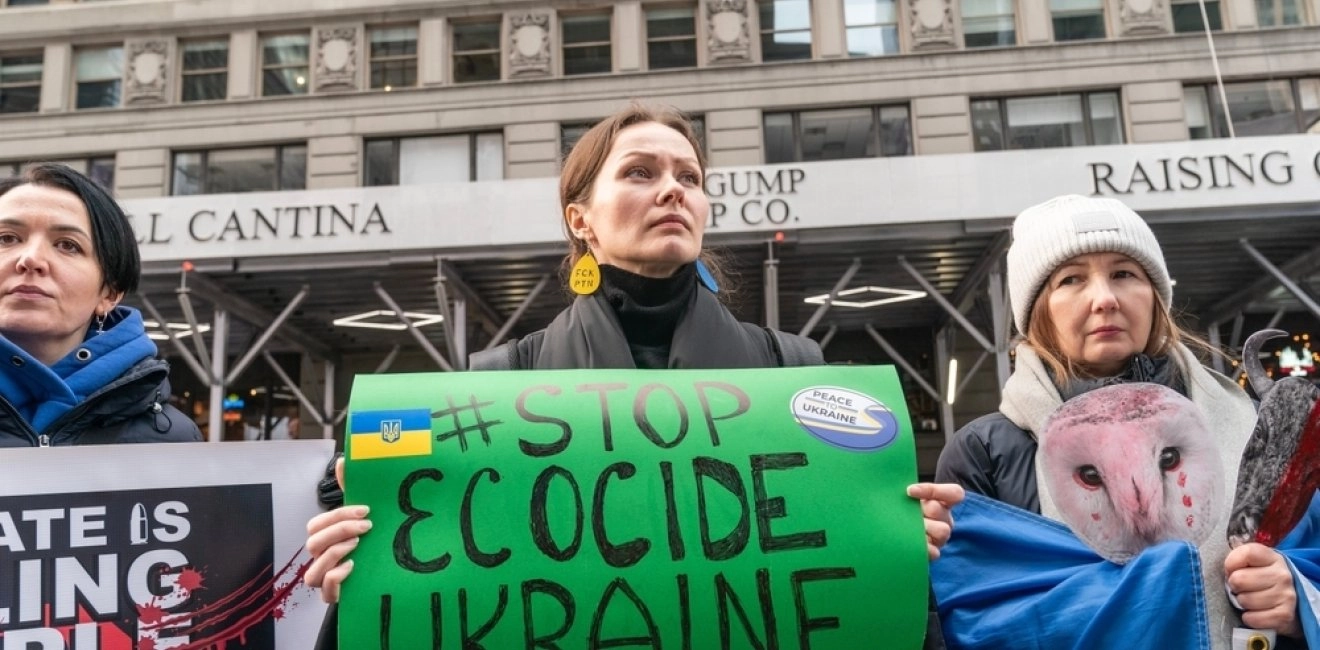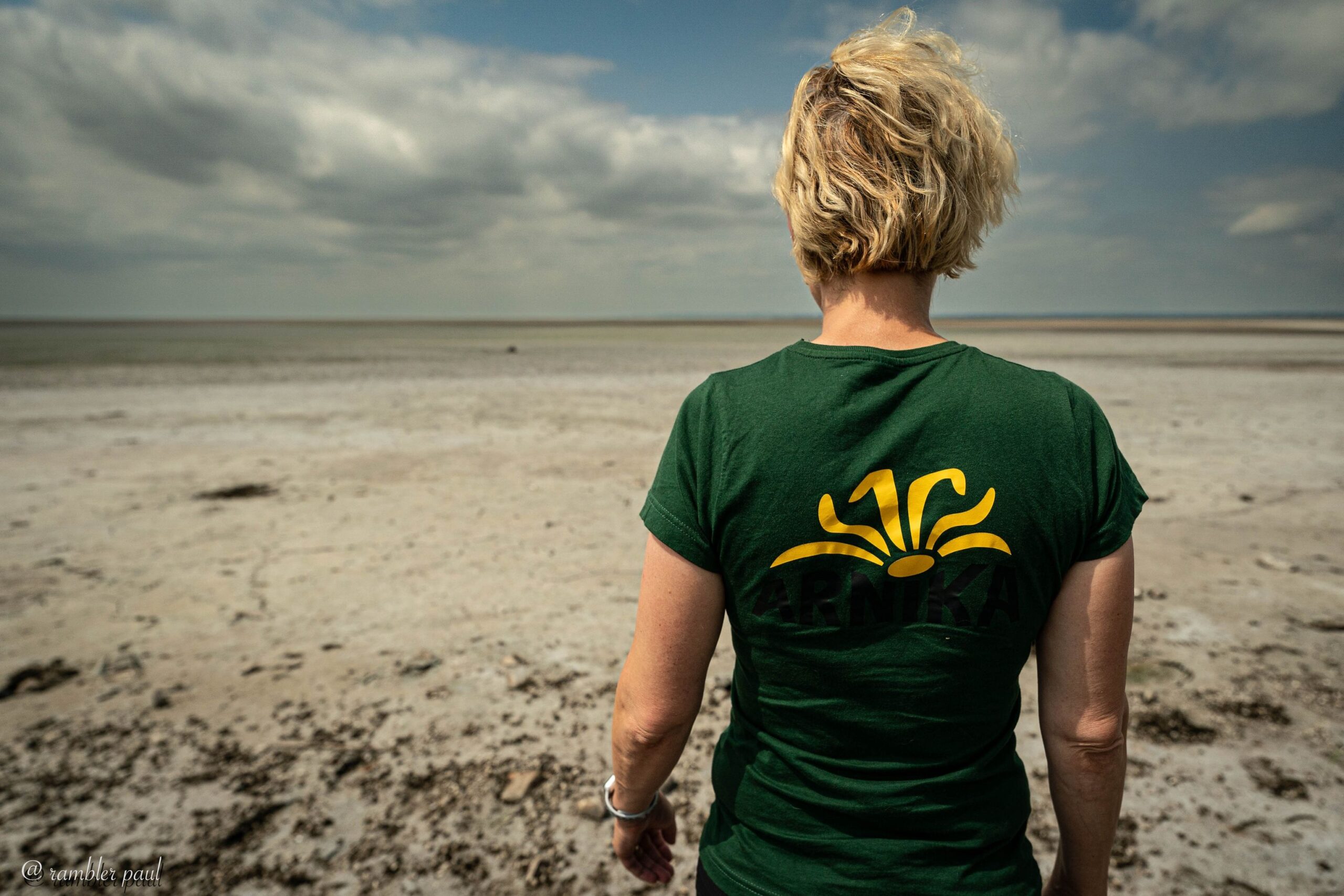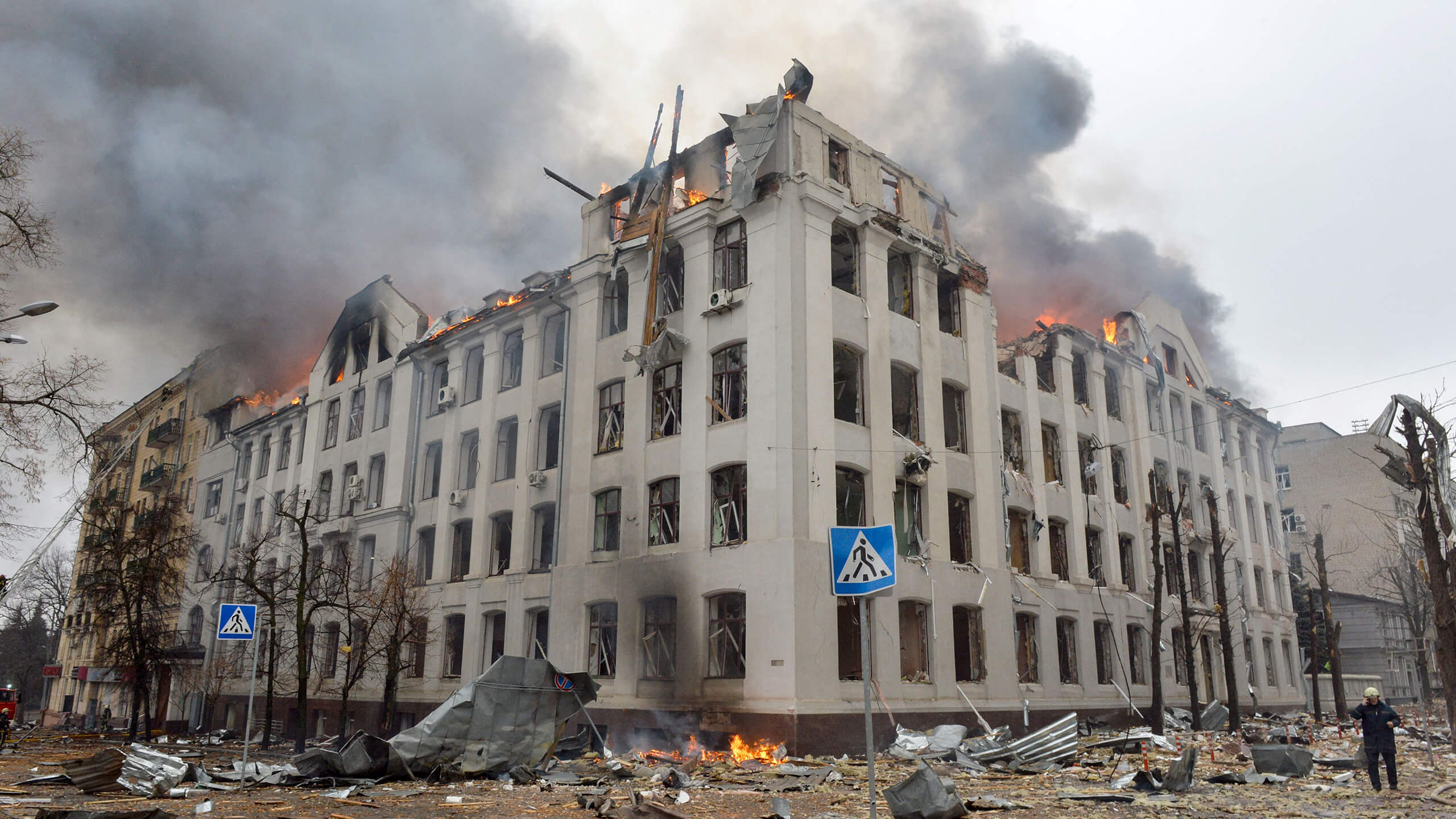Alexej Ovchinnikov
In the third and final part of this series we look at the consequences of the Russian invasion for environmental activism in Ukraine. Ukrainian environmental and climate organizations and initiatives have been directly affected by the war, working under shelling and missile attacks, analyzing the environmental consequences of the invasion and lobbying for projects devoted to the country’s green recovery.
As we have seen, domestic political crises and resulting repression have been the main challenge for environmental activists in Belarus and Georgia in recent years. For Ukrainians, however, it has of course been the full-scale Russian invasion. Ukrainian activists say that they find it hard to imagine the difficulties faced by Georgian and Belarusian activists. Faced with an external enemy, Ukraine made common cause and gathered its strength. In addition, the Revolution of Values (Revolyutsiya hidnostі) of 2014 had provided civil society with sufficient resources and tools to influence the current government. Instead of repression and pressure, however, Ukrainian environmental organizations and initiatives today face another catastrophe—war.
Domestic issues and problems have not gone away, however. Over three years of war, activists have continued to defend projects to preserve natural areas, whether in Svydovets in the Carpathians or Osorkorky in Kyiv, not allowing the war to be used as a pretext for construction and the destruction of natural areas. Activists from Belarus and Georgia can only envy the strength of Ukrainian civil society and the influence its representatives can exert on the government in Kyiv. However, this has been achieved at a very high price.
In interviews and private conversations, one often hears people say that “the war is taking the best.” And it is true that it is often the most active, responsible and dedicated who volunteer for the front, only to die there. Sad news arrives every month; this is a grievous loss for Ukraine’s environmental and climate movement.
Those who remain in the rear are motivated and ready to double their efforts to ensure that Ukraine emerges in better condition after the war, that its recovery makes it one of Europe’s leaders, and that its sacrifices have not been made in vain.
Here are the names of just a few of the environmental activists who have been killed since Russia launched its full-scale invasion of Ukraine.
- Roman Ratushniy (July 5, 1997 = June 9, 2022), a Kyiv-based activist (a reserve is now named after him)
- Max Levin (July 7, 1981 = March 13 or 23, 2022), an environmental journalist
- Semen Oblomey (June 13, 2000 = June 21, 2022), a tree defender and tree surgeon
- Viktor Ruban (May 9, 1968 = June 2022), a defender of Kyiv’s suburban forests
Many of those employed by national parks and reserves have also lost their lives in the course of the invasion. For example, the director of the Karmeliukove Podillia National Park, Vitaliy Zlenko (April 14, 1966 = June 13, 2022), was killed while in another protected area, the Vysunsko-Inhuletskyi Regional Landscape Park in the Mykolaiv region.
A solidarity forged by war
Diana Popfalushi, head of the Ukrainian Climate Network, told UWEC Work Group how the full-scale invasion has affected the work of Ukrainian activists.
“At the very beginning of the full-scale invasion, in early 2022, I and many other climate activists essentially changed our spheres of activity. Almost nobody was dealing with climate or environmental issues. We understood that there were other, more important tasks. So in the beginning, nobody was thinking about the climate and environmental agenda,” she says.
“Later, however, in the middle of 2022, we began to understand. Okay, we’d done all that was necessary, provided our country with ‘first aid.’ It was time to get back to our work and deal with climate change issues. This has become a very pressing question though—how can we return people’s attention to this теме? The war goes on. Very few people are thinking about environmental problems and climate change right now.”
“The first year and a half of the full-scale invasion were particularly hard,” she continues. “In the main we were doing small projects. For example, for installing solar panels. This was something that could be shown as important right here and now, like making a hospital or school energy independent from the constant power cuts caused by missile attacks. So we tried to combine climate and environmental projects with solutions to the issues caused by the war.”
“We also had a project to build a community garden. You might think, who needs a community garden during a war? But the project turned out to be what people wanted. Many internally displaced migrants came to us, people who had been forced to leave combat zones. They made up around 80% of those who visited the community garden. For them it was a good opportunity to keep busy and stabilize ourselves psychologically. And we saw that projects conceived before the full-scale invasion could also be relevant in wartime.”
“Today, we’re essentially working on the same issues and areas we were developing before the full-scale invasion,” explains Popfalushi. “You could say that we’ve reformatted them. We’ve started to take a more comprehensive approach. For example, we’re now trying to link our projects to Ukraine’s green recovery. To make climate change relevant, we’re trying to place it within the framework formed by the war.”
Since the full-scale invasion, Ukrainian environmental and climate activists, organizations and initiatives have actively sought to place the consequences of the war in a climate-related context and demonstrate their global scope. For example, Russian aggression was presented as being based on the fossil fuel economy. Oil, gas, and coal sanctions were intended to weaken the aggressor. Ukrainian environmental organizations such as Razom We Stand were active in calling for these measures. Ukrainian climatologist Svetlana Krakovska openly called the invasion a war over fossil fuels.
As Popfalushi explains, this concept that the full-scale invasion is all about fossil fuel has been actively presented at international level and perhaps not so prominently in the Ukrainian context.
However, as she points out, working on the climate and environmental agenda in Ukraine is now more difficult: environmental issues and climate change are not seen as priorities, and financial support is also being redirected to aid the army and restore infrastructure. While large organizations can cope more easily, smaller initiatives struggle in this environment. However, high-profile issues, such as the idea of “green recovery,” which attract good sources of funding, allow them to continue their work. Large NGOs are trying once again to include environmental and climate-related issues into their agenda, and are seeking support from activists. The process of restoring the agenda is unfolding slowly, but it is advancing. Initiatives and organizations themselves are trying to draw attention not only to military issues, but also to what is happening in unoccupied Ukraine, including various covert schemes. A good example of this is the development of the Polonina Runa mountain ridge in the Carpathians (in addition to the construction of large numbers of wind turbines in alpine meadows, the project also includes large-scale road construction through high-altitude virgin forests).
While Ukraine might appear to be a greater focus of international attention than Belarus and Georgia, and therefore enjoys higher levels of financial support for environmental and climate organizations, Popfalushi notes that this is not the case. Many initiatives and NGOs continue to work on short-term projects. This requires additional spending of resources to seek funding and write reports. These are often short-term projects, lasting just a year or less. Ukrainian initiatives and organizations are also feeling the effects of reduced international funding. For this reason, there is no certainty that the project will be extended and that funds will continue to be available. As for fundraising within Ukraine, most donation campaigns are aimed at supplying the needs of the army. Environmental and climate projects are far from being a top priority.
When asked what gives her the strength and inspiration to work in such difficult conditions, Popfalushi replies: “As an activist, I try to focus on what I can do, what I can change. Over the course of the full-scale invasion, we’ve lost all illusions, so in the course of our work we simply focus on action. Along with the problems, I learned to immediately see solutions. Now, in order to continue our work, we need to find a stable source of funds and resources. So I’m continuing to write letters and seek solutions. But I think this is a personal thing. Everyone finds their own strategy and impetus to carry on working. We have visionaries on our team. For me, it’s easier to work when I have a clear understanding of what needs to be done, and I do it.”
When you talk to Ukrainian activists about the problems in Belarus and Georgia, they point out one significant difference. In Ukraine, the full-scale invasion, especially in the first year or two, united society and the government. It also opened the door to significant international support, which supplied the necessary resources.
Ukraine’s current path was shaped by the protests of 2014, also known as the Revolution of Values. Back then, the country made a choice in favor of civil society values, a choice for which it has paid a heavy price: war and invasion. Ukrainians also understand perfectly well what a political crisis is. However, Ukrainian citizens have always had the opportunity to fight for their climate and environmental rights, thanks to various initiatives and organizations. In Belarus, this opportunity disappeared in 2020. In Georgia, it has been under threat since 2024.
Environmental and climate activists are facing difficult times not only in Belarus, Georgia and Ukraine. In Russia, environmental organizations are also considered “undesirable,” and activists are subject to persecution and repression. UWEC Work Group will report on the situation with environmental activism in Russia in a separate article. Pressure on environmental and climate activism is also growing in Central Asia. Even in Western Europe, the situation with climate and environmental activism has worsened in the years since the full-scale invasion began, as Italian investigative journalist Marta Abba reported in her article “Under Pressure, European Environmentalists Seek New Ways to Fight” (in Italian).
All this is happening against the backdrop of accelerating climate change. Wildfires in Spain, heavy monsoon rains in India, drought in the UK. At a time like this, support for environmental and climate organizations needs to be dramatically increased. They are not only sounding the alarm, but also finding solutions for how we can best adapt to the shifting climate storm. Nonetheless, governments are cutting support programs while continuing to expand fossil fuel production. Maybe it is now up to us to step up and save the situation.
Translated by Alastair Gill
This series was produced as part of the Thematic Networks of PULSE, a European initiative that supports transnational journalistic collaborations.
- Environmental and Climate Activism in the time of invasion: Georgia
- Environmental and climate activism in the time of Invasion: Belarus
Main image source: Wilsoncenter







